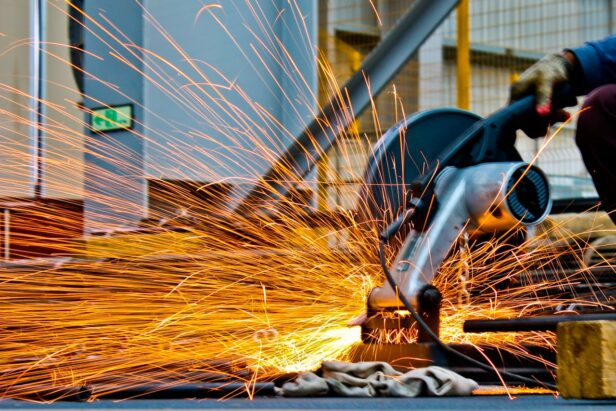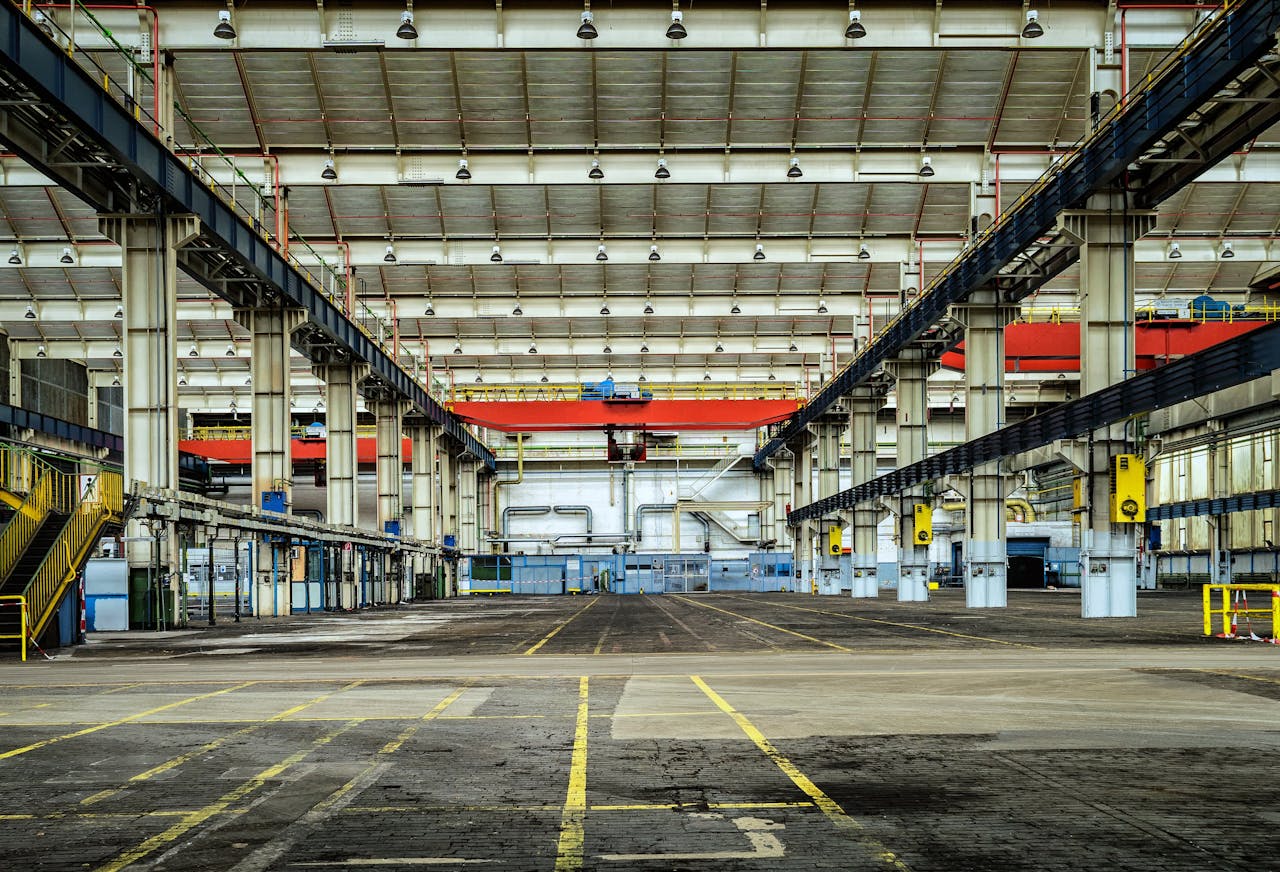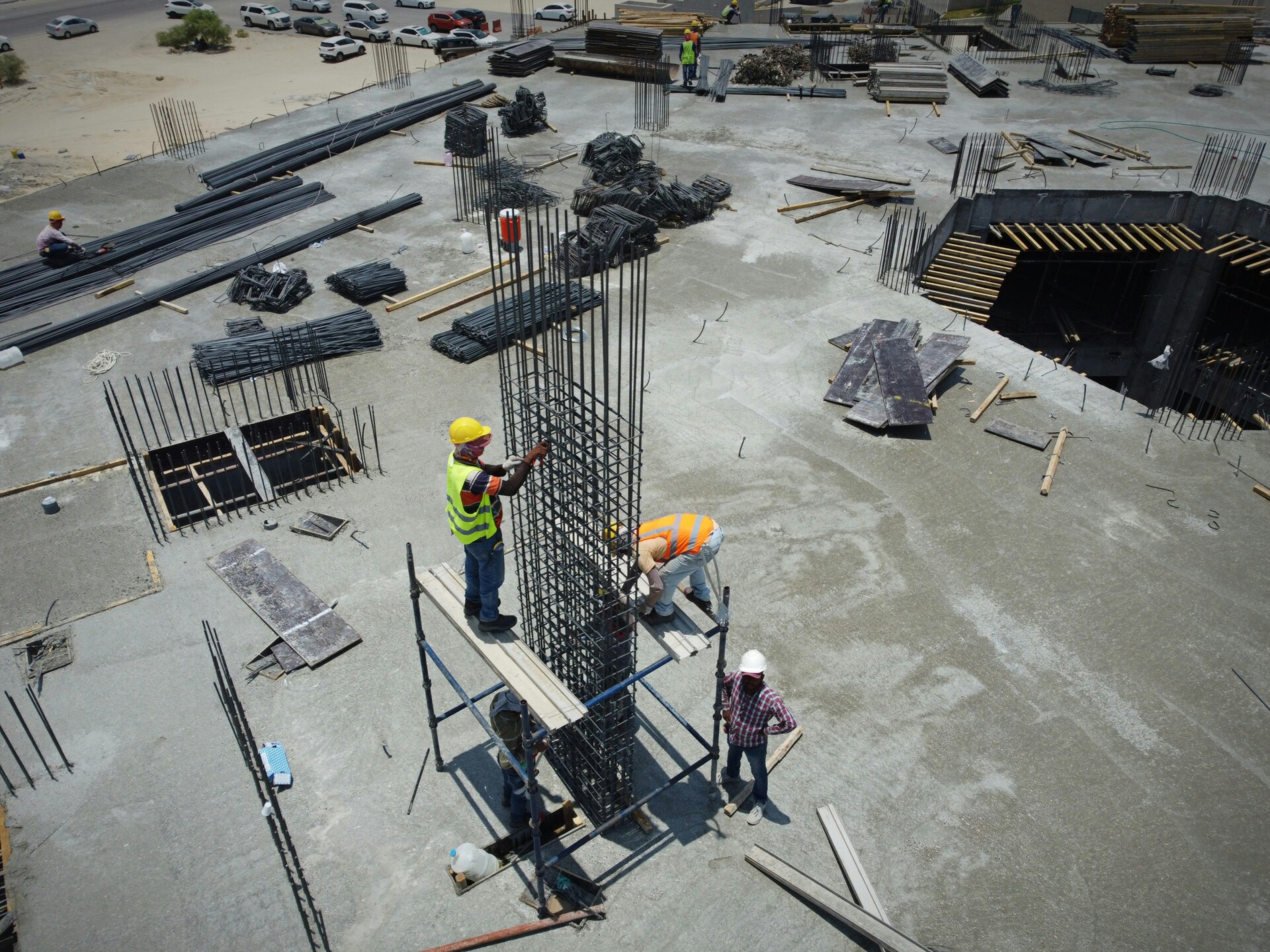Steel construction deaths jumped by 23% between 2019 and 2021, according to the Bureau of Labor Statistics. These fatalities drive home why we need strict safety protocols during every phase of steel erection.
OSHA standards for steel construction establish comprehensive safety rules through 29 CFR 1926.758, which governs systems-engineered metal buildings under Subpart R (Steel Erection) within Part 1926, Safety and Health Regulations for Construction. The standard covers column anchorage requirements, rigid frame bolting procedures, joist securing methods, purlin and girt usage restrictions, fall protection anchorage limitations, and construction load placement zones.
When Does OSHA 1926.758 Apply To Steel Erection?
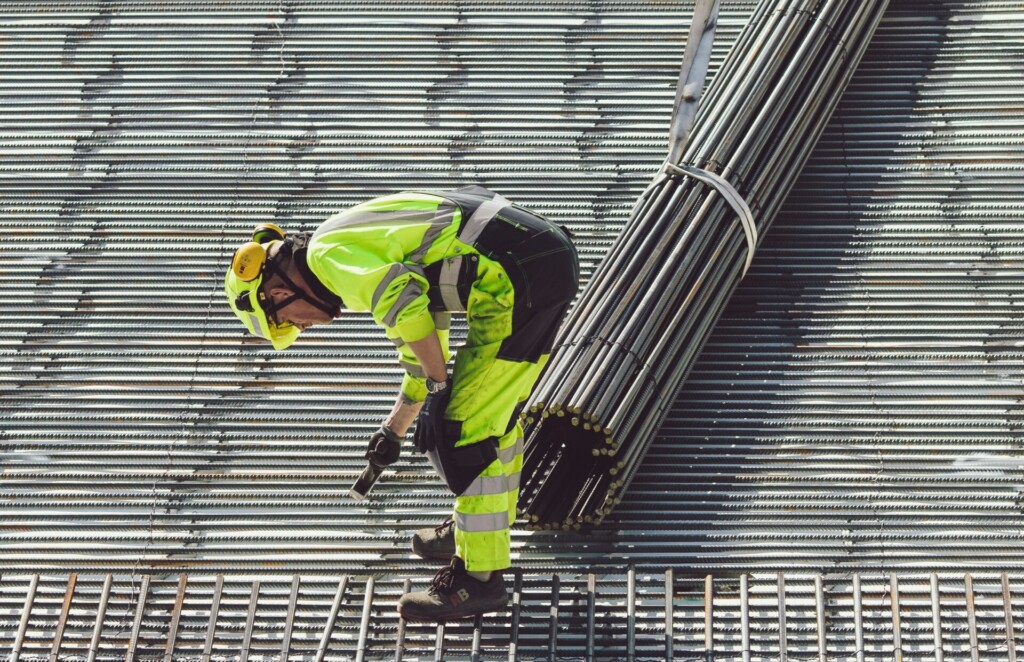
OSHA 1926.758 specifically governs the erection of systems-engineered metal buildings. This regulation creates a focused scope within the broader steel erection standards, targeting prefabricated building systems that require specialized safety protocols during assembly.
The standard operates within Part 1926, Safety and Health Regulations for Construction, under Subpart R for Steel Erection. All requirements from Subpart R apply to systems-engineered metal buildings with two key exceptions. These exceptions remove sections 1926.755, which covers column anchorage requirements, and 1926.757, addressing open web steel joists.
We encounter these exceptions because systems-engineered metal buildings use different structural approaches than traditional steel construction. The engineered nature of these buildings means manufacturer specifications often dictate connection methods that may differ from standard steel erection practices. The regulation acknowledges this by carving out specific areas where the general steel erection rules don’t fit the engineered building approach.
For construction teams working on pre-engineered metal buildings, warehouses, or similar structures, 1926.758 becomes the primary regulatory framework. The standard applies from the moment steel erection begins until the building frame reaches substantial completion. This includes all phases where workers handle, position, connect, or secure the structural steel components that form the building’s skeleton.
How Must Columns, Frames, Joists, And Connections Be Secured?
Securing structural components during steel erection requires precise attention to specific connection requirements for each element. We coordinate these securement procedures throughout the construction process to maintain structural integrity and worker safety.
Column Anchorage Requirements
Every structural column must be anchored by at least four anchor rods or anchor bolts under OSHA 1926.758(b). This minimum requirement applies regardless of column size or load capacity. We verify that all four anchor points provide adequate bearing before proceeding with column erection.
The four-bolt requirement replaces the general column anchorage provisions found elsewhere in Subpart R. We ensure each anchor rod meets the project’s specified strength requirements and positioning tolerances before setting columns.
Rigid Frame Bolt Installation
Before releasing hoisting equipment from rigid frames, we install and tighten fifty percent of the bolts on both sides of the web adjacent to each flange. When manufacturer specifications require more bolts than this fifty percent minimum, we follow the manufacturer-specified number instead. This requirement ensures adequate connection strength during the critical transition from crane support to structural support.
We typically use wrench-tight connections for this initial securement, which provides sufficient holding power while allowing for final alignment adjustments. The bolting pattern must address both flanges to distribute loads properly across the connection.
Girt And Eave Strut Connection Protocols
Girt and eave strut connections require careful sequencing when multiple members share common connection holes. We maintain at least one bolt with a wrench-tight nut on the first member throughout the connection process. This prevents displacement during installation of subsequent members.
When a manufacturer-supplied, field-attached seat or similar device secures the first member against displacement, we may remove the bolt temporarily. These devices must be properly attached to both the supporting member and the first member before bolt removal begins.
Joist Securement Standards
Both ends of all steel joists and cold-formed joists must be fully bolted and welded to the support structure before three critical activities occur. We cannot release hoisting cables, allow employees on the joists, or place construction loads until this securement is complete.
The term “fully bolted and welded” means all required connections at both joist ends must reach their specified attachment strength. We coordinate with our steel detailing to ensure joist connections meet both temporary erection needs and final design requirements.
Cold-formed joists follow the same securement requirements as conventional steel joists. The connection method varies based on the specific joist type and support structure, but the timing requirements remain consistent across all joist categories.
When Can Construction Loads And Workers Be On The Steel?
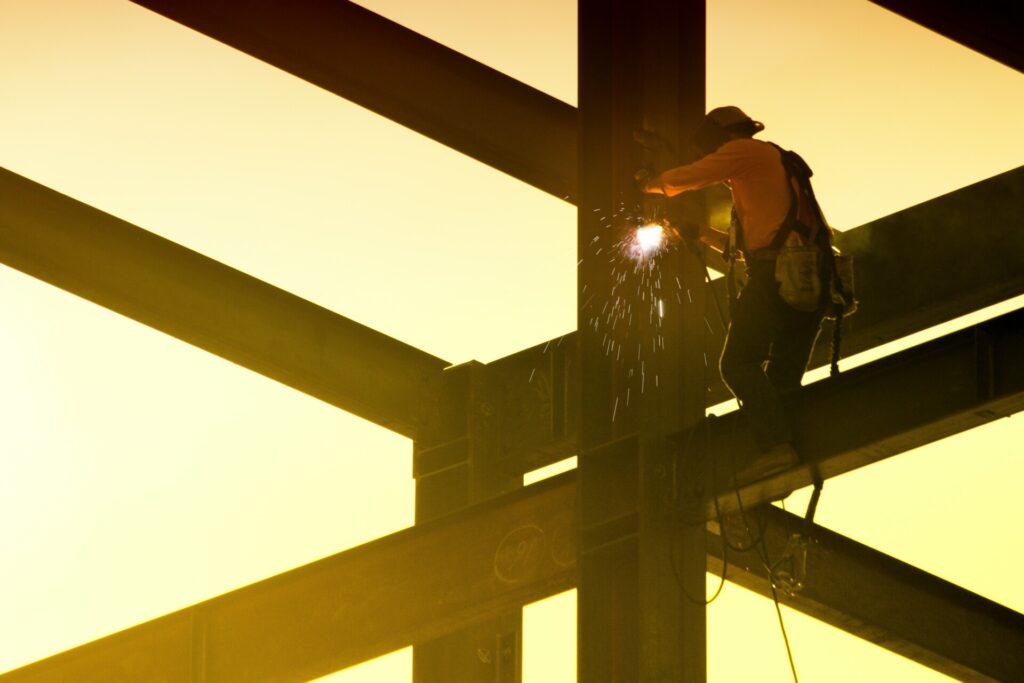
The fundamental rule controls when structural steel can bear additional weight during erection. Construction loads must never be placed on structural steel frameworks until we have safely bolted, welded, or otherwise adequately secured them according to OSHA 1926.758(d).
This prohibition protects against premature loading that could destabilize partially connected members. We verify all connections meet the minimum security requirements before allowing any construction materials, equipment bundles, or temporary loads onto the framework.
Load Placement Zone Restrictions
When construction loads are approved for placement, OSHA 1926.758(i) restricts their location to within 8 feet (2.5 meters) of the center-line of the primary support member. This 8-foot zone ensures loads remain close to the strongest structural points where the framework can safely transfer weight to the foundation.
Placing loads beyond this zone creates eccentric loading conditions that can overstress connections and compromise structural stability. We position all construction materials, decking bundles, and temporary equipment within this defined safety perimeter.
Worker Access And Hoisting Cable Release
No employee may access steel joists until both ends are fully bolted and/or welded to the support structure. This requirement under OSHA 1926.758(f) prevents workers from being on inadequately secured members that could shift or fail under their weight.
Hoisting cables must remain connected until these same connection requirements are met. We cannot release crane lines from joists until field bolting or welding secures both bearing ends to their support members, creating a stable platform for subsequent work.
The regulation applies equally to steel joists and cold-formed joists, requiring the same level of connection security before worker access or cable release. This ensures consistent safety standards regardless of the specific joist type we install on a project.
How Do Purlins And Girts Relate To Fall Protection And Access?
OSHA 1926.758 places strict limits on using purlins and girts for fall protection purposes. These structural elements cannot serve as a fall arrest anchorage point under normal circumstances. The only exception requires written approval from a qualified person who has evaluated the specific structural conditions and load capacities.
A qualified person must assess the structural integrity and load-bearing capacity of the purlin or girt system before providing written approval. This evaluation considers factors like member size, connection strength, and the maximum arresting forces that could be applied during a fall event. We coordinate with structural engineers to ensure any approved anchorage points can withstand the dynamic loads generated during fall arrest scenarios.
Walking And Working Surface Requirements
Purlins may be used as a walking/working surface only under specific conditions outlined in the standard. All permanent bridging must be installed and properly secured before workers can access purlins as walkways. This bridging provides lateral stability that prevents the purlins from rolling or shifting under worker loads.
Fall protection must be provided whenever workers use purlins as a walking/working surface. This requirement applies even when the purlins themselves have received qualified person approval as anchorage points. We typically install temporary horizontal lifelines or other fall protection systems that distribute loads across multiple structural members rather than relying on individual purlins.
The standard limits purlin use as walking surfaces to safety systems installation activities. Workers cannot use purlins for general construction access or material handling operations. This restriction helps minimize the risk of overloading these members beyond their designed capacity for lateral forces.
Conclusion And Next Steps
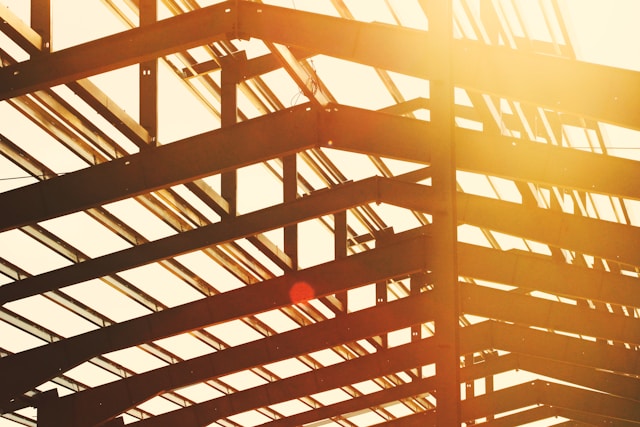
OSHA 1926.758 establishes critical safety requirements that directly impact our construction sequencing for systems-engineered metal buildings. The standard requires structural columns to have four anchor rods minimum, rigid frames to maintain 50% bolting before hoisting equipment release, and complete joist connections before worker access or load placement. These requirements shape how we coordinate material deliveries, crane operations, and crew schedules across the erection process.
We integrate these compliance checkpoints into our daily construction management routines. Before releasing any hoisting equipment, our teams verify bolting percentages on rigid frames and confirm both ends of joists are fully connected. Load placement stays within the 8-foot centerline zone of primary support members, while purlin and girt usage for fall protection requires qualified person approval and permanent bridging installation. This systematic approach to OSHA 1926.758 keeps our steel erection projects moving efficiently while protecting crew safety and avoiding compliance issues.
Need expert management for your steel erection project? Contact EB3 Construction to discuss how we handle complex steel compliance requirements.

